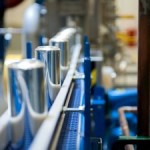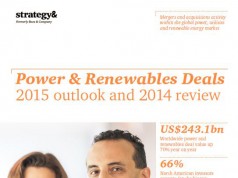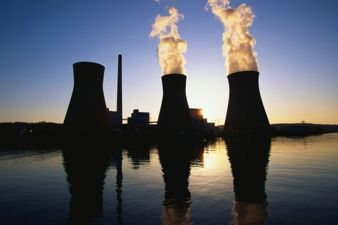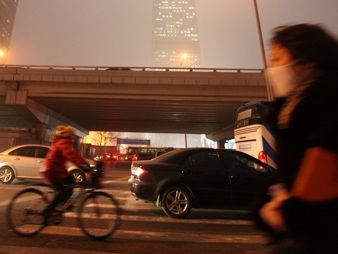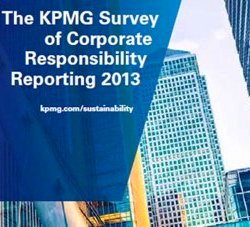- ArcelorMittal, the world’s largest steel company, estimates that using higher-strength steel achieves a 32 per cent reduction in the weight of steel columns and 19 per cent in beams. China and developing countries tend to use lower-strength steel, meaning that even a partial global switch to a higher-strength steel could save 105 million tonnes of steel a year and 20 per cent of the costs of steel use.
- The pressing out of metal components from sheet metal leaves significant waste, but intelligent organization of the shapes to be pressed out can realize significant savings. Deutsche Mechatronics GmbH operates in Germany using computer-driven shuffling and a production planning system that could reduce metal use by 12 per cent.
- In the United States, approximately 480 landfill sites, representing around 27 per cent of the nation’s landfills, capture methane gas released from decomposing organic waste. It is estimated that between 60 and 90 per cent of the methane in the landfill gas can be captured and burnt, which would cut the estimated 1.8 per cent methane contributes to US total greenhouse gas emissions.
- Agriculture is responsible for 70 per cent of freshwater withdrawals. In many countries, 90 per cent of irrigated land receives water through wasteful open channels or intentional flooding. Farmers in India, Israel, Jordan, Spain and the US have shown that sub-surface drip irrigation systems can reduce water use by 30 to 70 per cent and raise crop yields by 20 to 90 per cent. These technologies can be made affordable for use in the developing world with payback periods of less than a year.
The report provides more examples of savings that are being made in fossil fuels, paper, cement, waste streams and chemicals, pointing to the potential to roll-out such technologies across the globe and add up to the potential US $ 3.7 trillion saving.
Currently, however, many economies suffer from obstacles that lock-in existing patterns of resource use.
Among these obstacles are subsidies of up to US $ 1.1 trillion each year for resource consumption, which encourage the wasteful use of resources; labour taxes rather than resource taxes; regulatory frameworks that discourage long-term management of resources; bias towards existing technologies; and institutional biases, such as financial organizations avoiding investing in new technologies due to a perception of heightened risk.
Facilitating decoupling will involve removing these obstacles and creating the conditions that enable widespread investments in resource productivity. The report mentions two options, amongst others, which illustrate the type of combined policy which is needed.
One proposal uses taxation or subsidy reduction to raise resource prices in line with increases in energy or resource productivity. For example, if the average efficiency of the car fleet rises by one per cent in one year, a one per cent price increase of petrol at the pump would seem fair and tolerable. This scheme would induce car manufacturers and consumers to speed up efforts to reduce petrol consumption or to avoid unnecessary trips.
Another policy looks to shift revenue-raising onto resource prices through resource taxation at source or in relation to product imports, with recycling of revenues back to the economy.
Many countries have put in place such policy mixes promoting decoupling. For example, at European Union level, the 7th Environmental Action Programme and the Roadmap to a Resource Efficient Europe and the Energy Efficiency Directive of 2012 are long-term strategies moving energy, climate change, research and innovation, industry, transport, agriculture, fisheries and environment policy all towards decoupling.
The roadmap makes the case for a shift from labour taxes to resource taxes, and discusses the phasing out of environmentally harmful subsidies.
The IRP report calls for such strong leadership to be instituted across the board, allowing economic output to be achieved with fewer resource inputs, reducing waste and saving costs that can further expand the global economy for years to come.
“Decoupling can prove the most attractive strategy of combining the wish for economic growth with the need for making do with limited resources,” said the report’s lead author, Ernst von Weizsaecker, who also serves as Co-Chair of the International Resource Panel. He favours smooth and steady long-term strategies for revolutionary improvements in resource productivity, and argues that countries and private companies pioneering such strategies will achieve success.
“The report clearly demonstrates that business-as-usual is not an option. Rising commodity prices mark the end of an era of cheap and abundant resources,” said EU Commissioner for the Environment Janez Potočnik. “On the contrary, the report gives many examples that show improving resource efficiency is a way out of the crisis. Resource efficiency provides innovation and market opportunities to business, allowing them to maintain competitiveness, enjoy sustainable profits and minimize the risks of resource scarcity and degradation.”
Click here to read/download the Full Report.
Source: UNEP.
The International Resource Panel was established in 2007 to provide independent, coherent and authoritative scientific assessments on the sustainable use of natural resources and the environmental impacts of resource use over the full life cycle. By providing up-to-date information and the best science available, the International Resource Panel contributes to a better understanding of how to decouple human development and economic growth from environmental degradation. The United Nations Environment Programme hosts the secretariat for the panel. For more information, visit http://www.unep.org/resourcepanel/.


